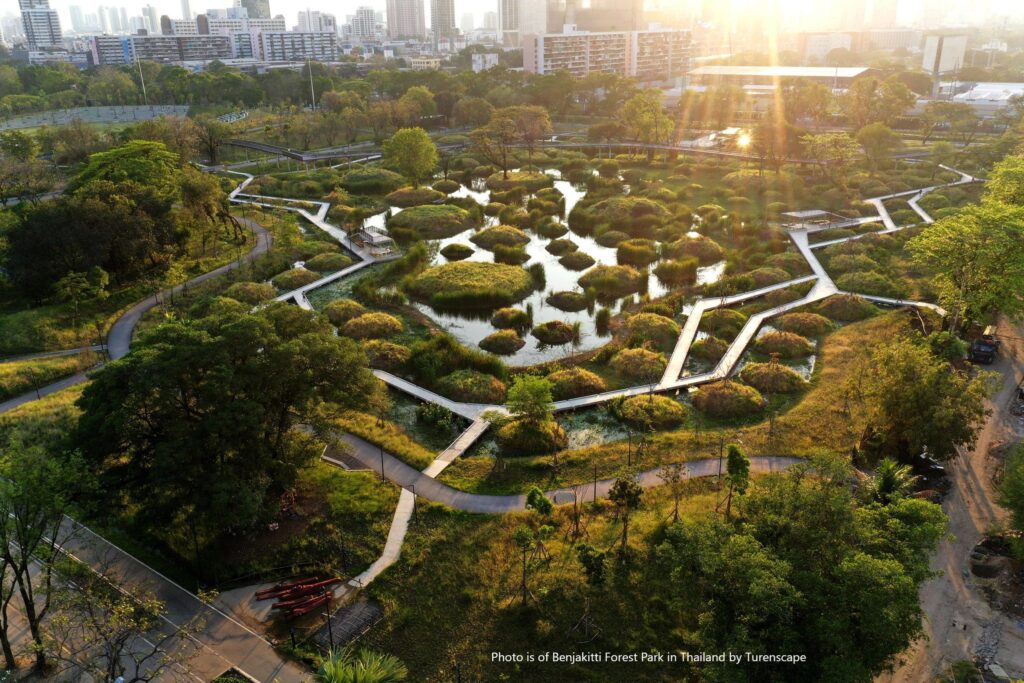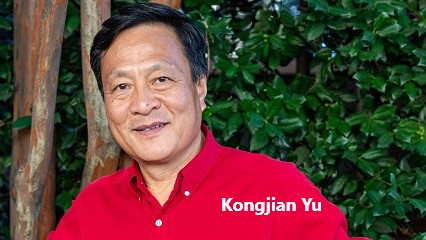
Cover photo: Sanya Mangrove Park – Yu has proposed “sponge cities” that prioritise green space to deal with flooding. Photo by Turenscape
Beijing-based landscape architect Kongjian Yu has pioneered the concept of “sponge cities” – urban landscapes designed to soak up storm water, while creating appealing natural spaces
Chinese landscape architect Kongjian Yu believes that landscape architects need to take the lead in transforming “grey infrastructure into green infrastructure” if our cities are to resist flooding caused by changing climates.
He spoke to Dezeen after winning the Cornelia Hahn Oberlander International Landscape Architecture Prize.
“We have to do better”
“As climate change makes floods and drought more frequent, the climate in the regions like Europe and some part of the US that used to have more predictable and mild climates become monsoon-like, changeable climates, just like in China,” said Yu.
“The centuries-old grey infrastructure failed and will fail due to their non-resilience,” he continued, pointing to the recent debilitating flooding in urban cores like New York City.
Yu’s experiences of rapid development in his home country in the late 1990s informed his approach to landscape design.
“I saw how wrongly the urbanisation in China happened at the sacrifice of the healthy ecosystem of the wetland, the rivers and the spaces for water in 1996 to 1997,” he said.
“I knew I could do better, and I knew we have to do better to reach a sustainable relationship between man and nature.”

Yu and his studio Turenscape have been working for years to help convert urban centres in China from concrete-dominated landscapes into places where water can freely flow through the city and into integrated parks and restored waterways.
Sponge-city concept based on “ancient wisdom”
Yu calls his theoretical approach to flood mitigation “sponge cities”. The theory was informed by Yu’s experiences of flooding in the late ’90s in China.
“Sponge city is a water-resilient city built on nature-based ecological infrastructure, which is called a green sponge,” he explained.
“Its strategy is to retain water at the site, slow down water flow, and be adaptive to the force of water, which is totally opposite to the grey infrastructure that all industrial and modern cities are dependent on – big dams to accumulate water, channel rivers back to flush away floods, and building floods wall to keep out a flood.”

“The sponge city is rooted in the ancient wisdom of monsoon climate adaptation and is nature-based, and therefore can be upgraded and be inspiring to solve the problems of global climate change.”
Yu and his studio have put these theories into practice in projects like Sanya Dong’an Wetland Park in China and Benjakitti Forest Park in Thailand, both projects that saw the conversion of dump sites and polluted waterways in urban centres into conservatory and recreation sites.
Turenscape has completed hundreds of similar projects internationally and in 2014 the Chinese government officially adopted Yu’s sponge city concept as a “guiding theory” for future urban construction and revitalisation.

Yu believes that landscape architects must play a “leading role” in continuing to pressure cities and nations into thinking about flood mitigation when constructing urban areas.
“That is why I will advocate Sponge Planet … By doing that, landscape architecture can also include political and social advocacy and use political and administrative force.”
Source: Dezeen, Oct 10, 2023. https://www.dezeen.com/2023/10/19/sponge-cities-flooding-interview-kongjian-yu-turenscape/
Author: Ben Dreith